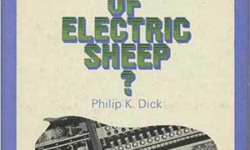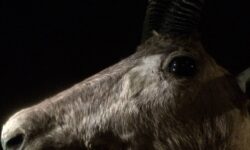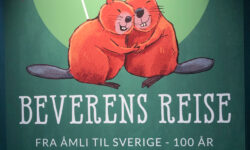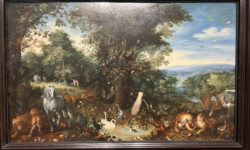Extinction
This is my work on species extinction and responses to it. I manage two large projects on this topic: “Beyond Dodos and Dinosaurs: Displaying Extinction and Recovery in Museums” and “Extinction as Cultural Heritage? Exhibiting Human-Nature Entanglements with Extinct and Threatened Species”. You can read more about these projects on Remembering Extinction.
Dolly Jørgensen and Miles Powell. “Extinction in Environmental History: Historicising problems of classification and intentionality.” In The Routledge Handbook of Environmental History, ed. E. O’Gorman, W. San Martín, M. Carey, and S. Swart, 204-216. Routledge. Every extinction has a history—a cultural, economic, and political context that leads to the ultimate end…
Read more…
In Winged Worlds: Common Spaces of Avian-Human Lives, ed. Olga Petri and Michael Guida, 21-33. Routledge, 2023. In this chapter I examine two displacements: species extinction and museum exhibition. Building on the idea of liveliness, I argue that both types of displacements displace animals from lively relationships, from history, and…
Read more…

In Literary animal studies and the climate crisis, ed. Sune Borkfelt and Mattias Stephan, 229-243 (Palgrave Macmillian, 2022) Philip K. Dick’s Do Androids Dream of Electric Sheep? (1968) is often understood as commentary on what it means to be human contra android. Less work has been done on animals in…
Read more…

In Traces of the Animal Past: Methodological Challenges in Animal History, ed. Jennifer Bonnelland Sean Kheraj, 371-387 (University of Calgary Press, 2022) In this chapter I will examine three portraits of the bluebuck, one created by the MNHN in Paris, one by the Naturhistoriska Riksmuseet (NRM) in Stockholm, and one…
Read more…

The public outreach project The Beaver’s Journey (Beverens reise) which was developed for the 100th anniversary of the beaver reintroduction project from Norway to Sweden has multiple components:
Read more…
Andy Flack and Dolly Jørgensen, in The Routledge History of Emotions in the Modern World, ed. KatieBarclay and Peter N. Stearns, 235-251 (Routledge, 2022) More-than-human environments often evoke highly consequential emotional responses which are always rooted in spatial-temporal contexts. Human emotions have often directly impacted not only on the lives…
Read more…

Published in Eden and Everything After, ed. Jean Marie Carey and Kristin Armstrong-Oma, 63-66 (University of Stavanger Museum of Archeology, 2023). Jan Brueghel the Elder (1568-1625) painted one of the earliest European representations of guinea pigs in his work Garden of Eden (1613). In Brueghel’s creation, newly discovered animals from early explorations of…
Read more…
História, Ciências, Saúde-Manguinhos 28, supl. (2021): 161-183. The Caribbean monk seal (Monachus tropicalis), the only seal species native to Central America, was declared extinct in 2008, with the last confirmed sighting in 1952. This species historically had a broad range throughout the gulf of Mexico. This article discusses the history…
Read more…
History & Theory 61, no. 2 (2022): 209-218. Extinction, in biological terms, is the end of an evolutionary line, a potential future cutoff. It involves a transition between the historical past in which a species was biologically alive and a future in which it isn’t, a transition from extant to…
Read more…
Ecozon@ European Journal of Literature, Culture and Environment 11, no. 2 (2020): 200-207. Both environmental historians and ecocritics are in the business of simultaneously analysing the stories we tell about the human-nature relationship and creating those stories. Using the case of Kiki, an Aldabra giant tortoise on display in the…
Read more…




